Recently, Prof. LU Shun, academic leader of the Department of Oncology, Shanghai Chest Hospital Affiliated to Shanghai Jiao Tong University School of Medicine, and director of the Shanghai Lung Tumor Clinical Medical Center, led a team to conduct the MARIPOSA research, resulting in significant breakthroughs. The related finding was published in a top international journal The New England Journal of Medicine. And this was the second time that a research finding concluded as led by Prof. LU Shun had been published in the journal. This research finding brings about a new therapy for first-line treatment of EGFR-mutated, locally advanced or metastatic non-small cell lung cancers (NSCLC). Prof. LU Shun is the co-first author of the article.
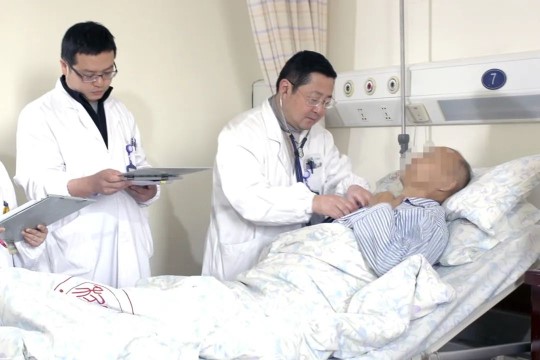
Targeted monotherapy currently represents the standard first-line treatment for patients with EGFR-mutated advanced NSCLC. However, there are still many unmet needs in clinical practices, and there is still room for improving and enhancing the efficacy of monotherapy. Amivantamab is a specific antibody with dual targets of EGFR and MET, which, combined with lazertinib the EGFR targeted drug, provides the ability to strongly inhibit tumors and delay resistance. In order to further validate the clinical efficacy of the combination, Prof. LU Shun led Chief Physician ZHOU Zhen’s team in the Department of Oncology to conduct a phase 3 randomized trial assessing the first-line treatment with amivantamab-lazertinib in patients with EGFR-mutated, locally advanced or metastatic NSCLC, compared to monotherapy with osemertinib or lazertinib (MARIPOSA).
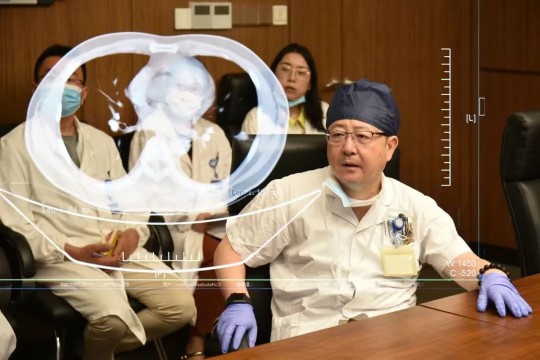
Overall, 1,074 patients with advanced NSCLC underwent randomization for combination therapy with amivantamab plus lazertinib, and monotherapy with osemertinib or lazertinib. The research found that the median progression-free survival was 23.7 months for the amivantamab-lazertinib group, versus 16.6 months for the osemertinib group, and an objective response was observed in 86% of the patients in the amivantamab-lazertinib group. It was also found that more apparent survival benefits were observed in the amivantamab-lazertinib group over time, indicating that the combination therapy delivered a more durable anti-tumor efficacy, especially for patients with brain metastases.
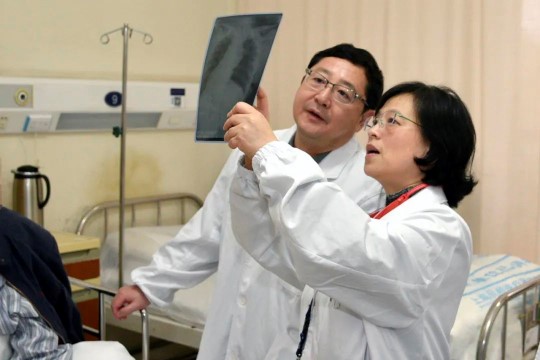
Prof. LU Shun and Chief Physician ZHOU Zhen are reading a CT image for a patient
The research finding confirms that in the first-line treatment of EGFR-mutated advanced NSCLC, the combination therapy with amivantamab plus lazertinib is more effective than targeted monotherapy. Prof. LU Shun stated that the research provides inspiring data that imply potentials and prospects of the combination therapy. It is expected to set up a new standard for targeted therapy, and provide a new option for many patients with advanced lung cancers, benefiting them a lot in terms of survival.
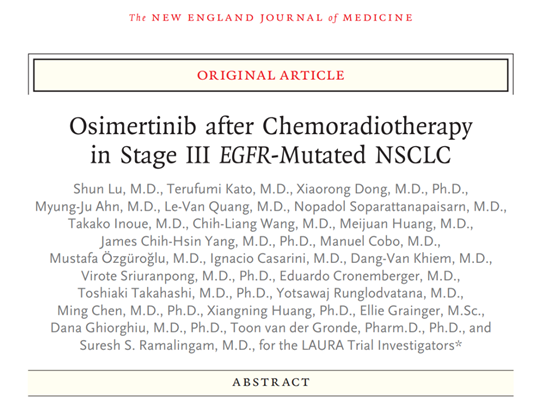
A month ago, Prof. LU Shun from the Department of Oncology, Shanghai Chest Hospital Affiliated to Shanghai Jiao Tong University School of Medicine, acting as leading PI of a global clinical research, published his findings in the top international journal The New England Journal of Medicine, leading a new trend of targeted therapy for unresectable stage 3 NSCLC worldwide.
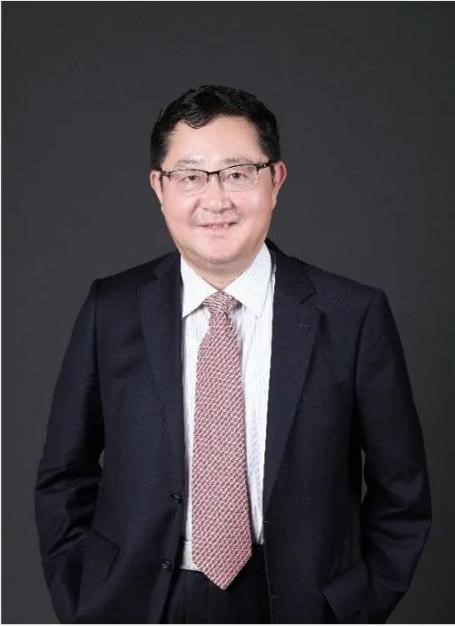
Prof. LU Shun
Chief physician of Shanghai Chest Hospital Affiliated to Shanghai Jiao Tong University School of Medicine, doctoral supervisor, Level-2 professor, young / middle-aged expert with outstanding contributions to national health, leading talent in Shanghai, and outstanding academic leader in Shanghai - Prof. LU Shun works (or worked) as managing director of the Chinese Society of Clinical Oncology (CSCO), vice chairman of the CSCO Foundation, former chairman of the Lung Cancer Committee of the China Anti-Cancer Association, chairman of the DIA China Regional Advisory Council, member of the Standing Committee of the CMA Oncology Society, chairman of the Lung Cancer Committee, former chairman of the SMA Oncology Society, and president of the SMDA Oncology Branch. As the person in charge, he presides (or presided) over the MST’s key national chronic diseases project, an international cooperation project, an important national special project for new drug innovation, two projects under the 863 Program, a key project of the Natural Science Foundation of China, as well as special and general projects for lung cancers. He received the first prize of CACA Science and Technology Awards, the first prize of Shanghai Medical Science and Technology Awards, the second prize of Huaxia Medical Science and Technology Awards, the first prize of Shanghai Science & Technology Progress Awards, the President Award of Shanghai Jiao Tong University, to name but a few.

